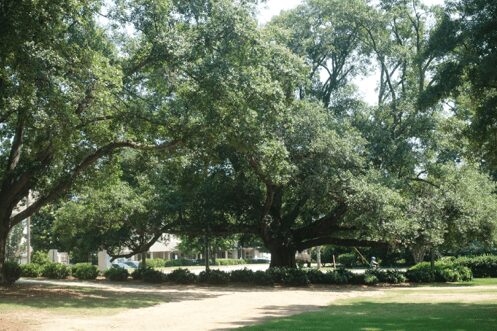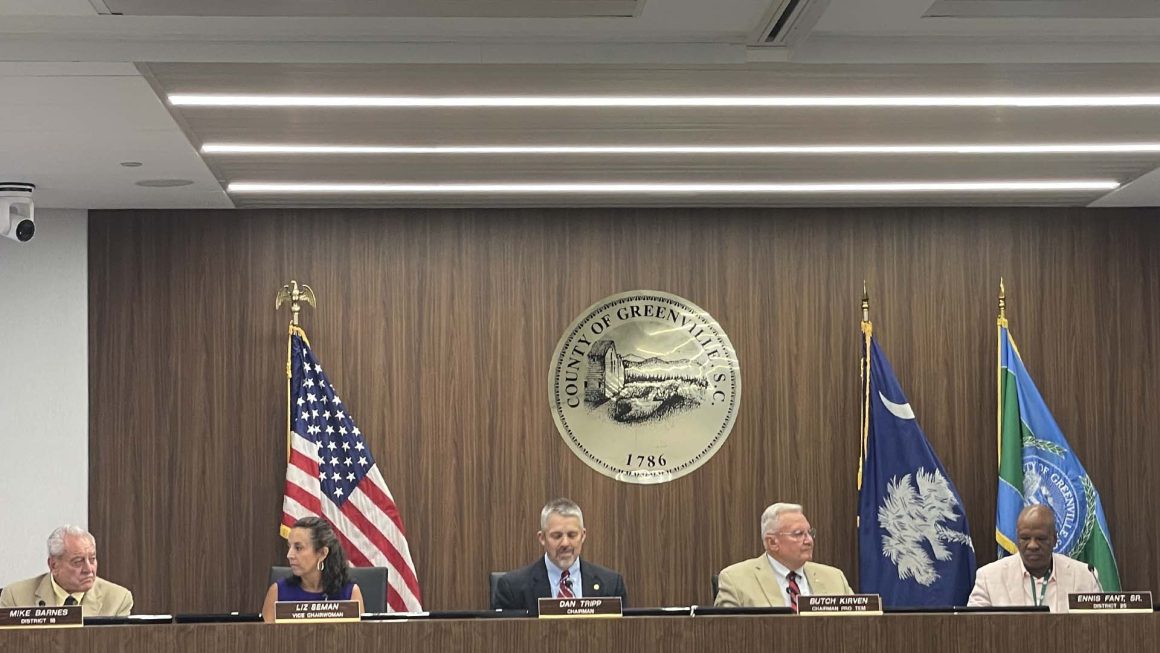“The richness of life in any given landscape is generally linked to the richness and intricacy in its layering.”
–The Living Landscape by Darke and Tallamy
In the natural world, plants of all different heights grow close together. From the ground up to the tree canopy, each layer supports a unique ecosystem of insects, birds, and mammals. Carolina wrens are happy down low and nest in the darndest places, but great crested flycatchers feed and perch up high, and nest in tall tree cavities.
Plant your landscape to mimic nature’s layers and see measurable wildlife and economic benefits, beyond just beauty. Let’s dive in with canopy trees.
Canopy trees offer cooling shade, help save energy and lower energy bills in summer, and shelter homes from winter wind.
Columbia was part of a 14-city study mapping urban heat islands. It can be tens of degrees cooler in canopied areas versus new developments with few trees, industrial areas, and large impervious areas. Our climate is warming, and with the CDC reporting that extreme heat kills more than 1000 people in the U.S. every year, that shade matters.
Read the report. What do you think?
Trees of all heights capture and store carbon, absorb pollutants to clean the air, and release oxygen.
Native trees and shrubs help prevent erosion and protect the watershed: tree leaves on the branches and the ground slow down and sponge up heavy rain, and tree roots help hold soil in place.
Planting native trees and shrubs helps with the goal to reduce lawn, especially with a bed of shrubs and perennials beneath. Less lawn (no mowing and edging) reduces fossil fuel emissions, chemical herbicide/pesticide use, and pumps up biodiversity.
Native trees work much harder for South Carolina wildlife than a crape myrtle or a ginko. Native plants are food for local insects they have co-evolved with, sometimes the only food. Birds, reptiles, and hosts of wildlife eat those insects. Without them–without the native plants–the entire food web collapses, all the way up to us humans.
A native oak tree is the most ecological bang for your buck. Doug Tallamy calls oaks “our most essential native tree,” since they support the most species of insects by far: more than 900 caterpillar species nationally. And then there are the acorns!
Many oaks grow tall, but shorter ones native to the Midlands will be at our sale, too.
Remember, caterpillars are bird food! Just one clutch of chickadees eats 6000-9000 insects, and chickadee parents can have several families per year! WIldlife need us to plant native trees and shrubs that are their food source.
The urban tree canopy is aging. The City of Columbia removed 360 dead, diseased, or declining trees in 2022, and 440 in 2023.
Plant new trees to replace them, and plant saplings now to get going before existing canopy trees decline.
Native trees increase curb appeal and real estate value, up to 15% more!
Just look around right now at the glorious red maples, blazing blackgums, golden hickories and oaks, and imagine all that color in your own landscape.
Why plant trees now?
South Carolina Arbor Day is the first Friday in December, since December – March is the best time to plant woody species. While their tops are dormant, tree and shrub roots start getting a foothold, and can get two seasons of growth in before summer heat arrives.
Don’t wait for spring blooms to remind you about planting. The time is now!



